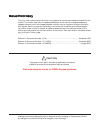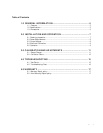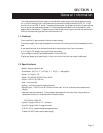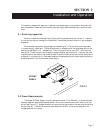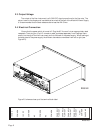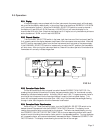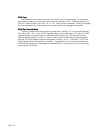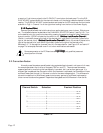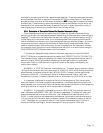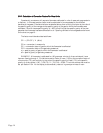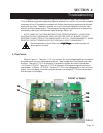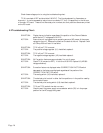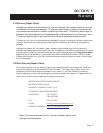Page 13
calculated by comparing ratios of their respective heat capacities. These ratios have been calculated
and are tabulated on a chart on page 16 of this manual as THR conversion factors. These factors
are used as written only when an instrument calibrated for
AIR AIR
AIR AIR
AIR is being used to measure the flow of
a different gas. These correction factors are theoretical and they are believed to be correct by the
manufacturer, but due to the wide variety of gases and the toxic or caustic properties of many of
them, the accuracy of most of the correction factors has not been verified.
3.2.1 Calcula3.2.1 Calcula
3.2.1 Calcula3.2.1 Calcula
3.2.1 Calcula
tion of Cortion of Cor
tion of Cortion of Cor
tion of Cor
rection Frection F
rection Frection F
rection F
actoractor
actoractor
actor
s Fs F
s Fs F
s F
or Standard or Standard
or Standard or Standard
or Standard
VV
VV
V
olumetrolumetr
olumetrolumetr
olumetr
ic Unitsic Units
ic Unitsic Units
ic Units
Often customers would like to measure a variety of gases with the same flowmeter without
having to go through the trouble some process of recalibrating the flowmeter each time a new gas is
measured. The alternative has always been that each flow reading could be calculated by multiply-
ing the display by the conversion factor, but this has always been time consuming and the actual
flow of a process cannot be continously monitored without having a calculator present. By incorpo-
rating the multiplication network into the Model 40 Power Supply, the calculations can now be
made by the power supply itself continuously. All that is required is for the customer to calculate
the conversion factor once as per instructions below, and then dial it in for each channel using the
CONVERSION FACTOR potentiometer on the front panel.
This factor can displayed for each channel of the power supply by turning the CHANNEL
SELECTOR switch to the desired channel and pressing the CORRECTION FACTOR SWITCH.
The flowmeter output is being multiplied by the number that is displayed before the flow signal is
sent to the display. When the flowmeter is measuring the same gas for which it is calibrated,
the correction factor is 1.000 and the flow signal will be sent to the display unchanged by the
multiplication network.
EXAMPLE: A 100 SLPM flowmeter is calibrated for air. The power supply is set up to display
100.0 when the flowmeter has the full scale output of 5.000 VDC. With helium flowing through the
same flowmeter, the display would still read 100.0 at 5.00 VDC, however, the flow would be ap-
proximately 143 SLPM. If the calibration factor for a selected channel is set to 1.430, then
the display will correctly indicate the flowrate of helium, which would be 143.0 SLPM at full scale.
If a flowmeter is calibrated for a gas other than air by the manufacturer, then the correction
factor will be set to 1.000 when that gas is being measured. If a different gas is being used in the
same flowmeter, then the correction factor can be calculated by taking the factor for the new gas and
dividing by the factor of the gas for which the flowmeter is calibrated.
EXAMPLE: If a flowmeter is calibrated for helium at 100.0 SLPM, the correction factor will
read 1.000 when the CORRECTION FACTOR switch is depressed. The display will read 100.0
when the flowmeter has an output of 5.000 volts. This indicates the full scale flowrate of 100.0
SLPM. If carbon dioxide is now measured by the flowmeter, the correction factor should be set to
.510, which is the THR correction factor for carbon dioxide (.73) divided by the factor for helium
(1.43). The display will now read full scale (51.0 volts) when the flowmeter has 51.0 SLPM of
carbon dioxide flowing through it, and the flowmeter will have an output of 5.000 volts.



